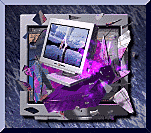gijoe77 wrote:
lets pretend someone bought this thing - what can one currently run/do with this thing? Any software that already exists or would someone have to code their own stuff to use this? I'm still confused...
Both, manual says there is a utility that allows you to customise the output of all the graphics pipes (user configurable tiling) as the user desires, or this could be done on an application basis since there appear to be some specific extensions for this hardware, so the developer could choose how they wish to output (which gfx device), multi-contexts all with complex geometry in a system operating in a non-distributed way (in terms of CPU and mem, I'm unsure if the vram can be shared between the different graphics pipes, or it must be replicated for each pipe?). Certainly, it is a novelty item, and you need something in the big-iron class (iirc the ATi's in the Onyx4 support this thing as well) pushing the pixels, but in terms of 'graphics related hardware', its pretty cool imo, while specialised. I don't I know of another breakout box which can perform this as a seperate part of the pipeline other than provided by the gfx, other systems rely on multi GPUs on the same board (or same discrete graphics subsystem) and then perform the mixing as part of its pipeline before outputting through the primary display. e.g Quantum3D AAlchemy.
The AA capability is neat, and the 'tiling' interesting. I don't think the AA would require a special code path for the GL program, since it can interleave all the inputs (which would duplicate all the geometry/texture memory, and jitter each output) for multiple pipes and mix at a hardware-level. Normally this would have to be done by rendering 4 frames (using the same gfx pipe) and then compositing via the accumulation buffer, or (if the pipes' texture buffer can handle it) rendering an image 4x the size and relying on the bilinear filtering when drawing to a downsized quad (not so easy on sgi's tbh).
@vishnu
This item is certainly applicable outside of broadcasting too since it can be used for higher-bandwidth visualisations and perhaps simulations which would make use of multi-context rendering. I think (I have seen) there are dedicated boxes with stuff like BNC ports and wotnot for the dedicated broadcast equivalent.... DMedia Pro breakout box which has a pretty similar livery. ???











 -
-
 -
-

 R16000 700MHz 8GB RAM
R16000 700MHz 8GB RAM
 R12000 300MHz SI 896MB RAM
R12000 300MHz SI 896MB RAM



















 . Not many other systems allowed this level of configurability for their graphics.
. Not many other systems allowed this level of configurability for their graphics.